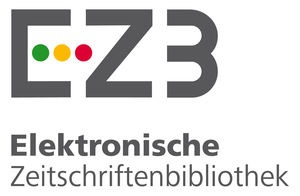Aspectos do pensamento diferencial de estudantes do ensino médio com o GeoGebra
DOI:
https://doi.org/10.23925/1983-3156.2023v25i3p297-321Palavras-chave:
Educação matemática, Tecnologias digitais, GeoGebra, Cálculo, Pensamento matemáticoResumo
Na pesquisa relatada neste artigo, busca-se explorar aspectos do pensamento diferencial e do pensar-com-GeoGebra emergentes quando estudantes do Ensino Médio investigam atividades sobre o cálculo de áreas e volumes. Incialmente, discutem-se questões sobre pensamento matemático e pensamento diferencial, propondo uma perspectiva sobre pensamento diferencial formada por quatro aspectos: noção de limite e continuidade, noção de infinitésimo, conceito de integral definida e concepção visual-geométrica. Do ponto de vista metodológico, com fundamentação na pesquisa qualitativa, desenvolveram-se experimentos de ensino com seis duplas de alunos de 1ª, 2ª, e 3ª séries do Ensino Médio, considerando a elaboração de uma tarefa composta por cinco atividades. No presente artigo, com base na noção de amostragem na pesquisa qualitativa, discutiu-se a investigação desenvolvida por uma das duplas de 3ª série em relação à atividade intitulada: “O Problema do Volume”. Os resultados destacam o papel da visualização e da experimentação-com-tecnologias no desenvolvimento do pensamento diferencial dos estudantes. Em especial, enfatizam-se como os recursos ou potencialidades do software ofereceram meios para que os estudantes articulassem os quatro aspectos que compõem o pensamento diferencial na perspectiva proposta. Por fim, este estudo contribui com a produção de conhecimentos acerca do uso de tecnologias digitais em Educação Matemática, em particular com relação ao ensino de Cálculo no Ensino Médio.
Referências
Baron, M. E. (1985). Origens e Desenvolvimento do Cálculo. Unidade 1 - A Matemática Grega. Tradução de José R. B. Coelho. Editora UnB.
Bicudo, M. A. V. (1993). Pesquisa em Educação Matemática. Revista Pro-Posições, 1, 18–23.
Borba, M. C., Scucuglia, R., & Gadanidis, G. (2018). Fases das tecnologias digitais em Educação Matemática: sala de aula e internet em movimento. 2. 1. reimp. Autêntica.
Borba, M. C., & Villarreal, M. E. (2005). Humans-With-Media and the Reorganization of Mathematical Thinking: information and communication Technologies, modeling, experimentation and visualization. Springer.
Dreyfus, T. (1991). Advanced mathematical thinking. In D. Tall (Org.), Advanced mathematical thinking processes (pp. 25–41). Kluwer.
Edwards, C. H. (1979). The historical development of the calculus. Springer-Verlag.
Gray, E., Pinto, M., Pitta, D., & Tall, D. (1999). Knowledge construction and diverging thinking in elementary & advanced mathematics. In D. Tirosh (Org.), Forms of Mathematical Knowledge (pp. 111–133). Springer.
Harel, G., Selden, A., & Selden, J. (2006). Advanced mathematical thinking: some PME perspectives. In A. Gutiérrez & P. Boero (Orgs.), Handbook of Research on the Psychology of Mathematics Education: Past, Present and Future. Sense Publishers.
Henriques, A. C. C. B. (2010). O pensamento matemático avançado e a aprendizagem da análise numérica num contexto de atividades de investigação. 462f. [Tese de Doutorado em Educação, Instituto de Educação Universidade de Lisboa, Portugal].
Marshall, M. N. (1996). Sampling for qualitative research. Family Practice, 13(6), 522–525. https://doi.org/10.1093/fampra/13.6.522.
Ponte, J. P., Brocardo, J. & Oilveira, H. (2016). Investigações matemáticas na sala de aula. 3. ed. rev. ampl.; 2. reimp. Autêntica.
Powell, A. B., Francisco, J. M., & Maher, C. A. (2004). Uma abordagem à Análise de Dados de Vídeo para investigar o desenvolvimento de ideias e raciocínios matemáticos de estudantes. Bolema, 21, 81–140.
Reis, F. S. (2001). A tensão entre rigor e intuição no Ensino de cálculo e análise: a visão de professores-pesquisadores e autores de livros didáticos. 302f. [Tese de Doutorado em Educação, Faculdade de Educação Universidade Estadual de Campinas].
Sad, L. A. (2000). Uma abordagem epistemológica do cálculo. In Anais da 23ª ANPEd. CD.
Santos, J. N., Carvalho, L. S., Silveira, R. de S., & Pinheiro, J. M. L. (2022). Uma revisão sistemática sobre a presença das tecnologias digitais frente às problemáticas do ensino e da aprendizagem do cálculo no ensino superior. Revista Brasileira De Educação Em Ciências E Educação Matemática, 6(1), 110–132. https://doi.org/10.33238/ReBECEM.2022.v.6.n.1.27791
Steffe, L. P., & Thompson, P. W. (2000). Teaching experiment methodology: Underlying principles and essential elements. In R. Lesh & A. E. Kelly (Eds.), Research design in mathematics and science education (pp. 267- 307). Erlbaum.
Tall, D. (1991). The psychology of advanced mathematical thinking. In D. Tall (Ed.), Advanced mathematical thinking, p. 3-21. Kluwer.
Trevisan, A. L. & Araman, E. M. (2021) Argumentos Apresentados por Estudantes de Cálculo em uma Tarefa de Natureza Exploratória. Educação Matemática Pesquisa, 23(1), 591-612. https://doi.org/10.23925/1983-3156.2021v23i1p591-612.
Zuchi Siple, I., Bar de Figueiredo, E., & Sabatke Herbst, J. (2022). Ideias fundamentais do cálculo no Ensino Médio: uma abordagem da PG à luz da resolução de problemas. Com a Palavra, O Professor, 7(18), 89–116. https://doi.org/10.23864/cpp.v7i18.810.
Downloads
Publicado
Como Citar
Edição
Seção
Licença

Este trabalho está licenciado sob uma licença Creative Commons Attribution-NonCommercial-NoDerivatives 4.0 International License.
Autores que publicam nesta revista concordam com os seguintes termos:- Autores mantém os direitos autorais e concedem à revista o direito de primeira publicação, com o trabalho simultaneamente licenciado sob a Licença Creative Commons Attribution que permite o compartilhamento do trabalho com reconhecimento da autoria e publicação inicial nesta revista.
- Autores têm autorização para assumir contratos adicionais separadamente, para distribuição não-exclusiva da versão do trabalho publicada nesta revista (ex.: publicar em repositório institucional ou como capítulo de livro), com reconhecimento de autoria e publicação inicial nesta revista.
- Autores têm permissão e são estimulados a publicar e distribuir seu trabalho online (ex.: em repositórios institucionais ou na sua página pessoal) a qualquer ponto antes ou durante o processo editorial, já que isso pode gerar alterações produtivas, bem como aumentar o impacto e a citação do trabalho publicado (Veja O Efeito do Acesso Livre).













